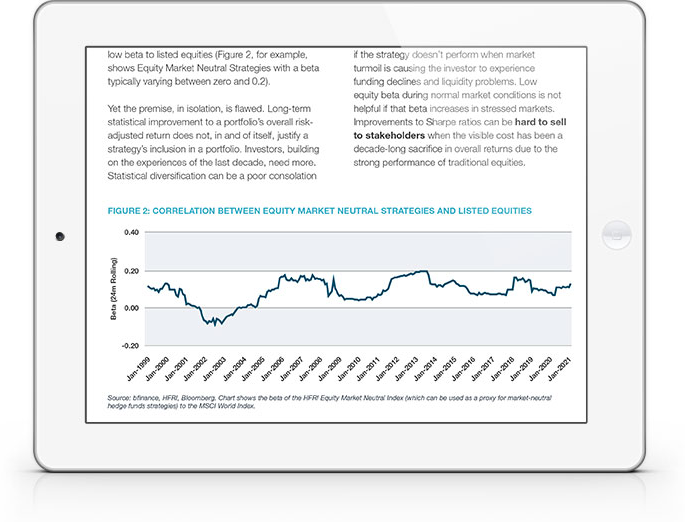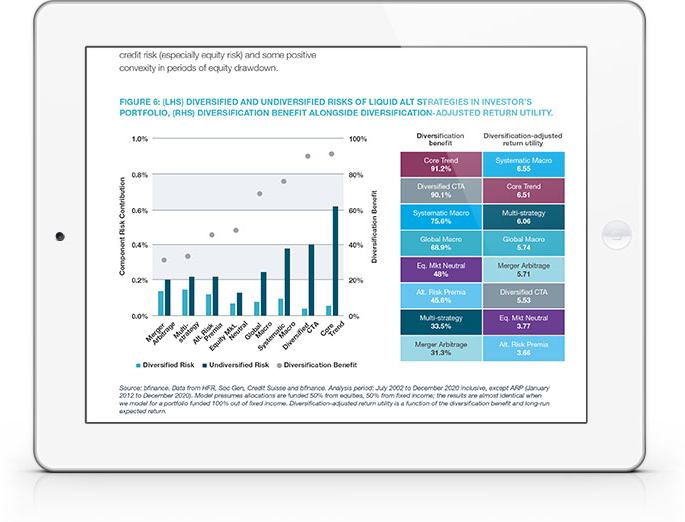
IN THIS PAPER
Classic statistical diversification is not necessarily enough to justify an allocation to Hedge Funds or Liquid Alternatives. Investors are increasingly concerned with downside awareness and the portfolio’s ability to navigate falling or volatile markets. This paper considers the diversification power of strategies in four distinct ways—‘market-independence’, ‘non-directionality’, ‘convex directionality’ and ‘divergent performance’—and re-classifies a range of hedge fund and liquid alternative strategies with these lenses in mind.
Creating sub-allocations to market-independent and convex (or tactical) directional strategies: While portfolio design should depend on the existing exposures and the objectives of the investor, these two complementary groups can work together to provide a more robust, downside-sensitive profile.
The hedge fund (and broader liquid alternative) universe continues to grow in size and complexity. Investors should seek to gain a comprehensive understanding of available strategies when constructing a diversifying allocation.

WHY DOWNLOAD?
In a period of heightened uncertainty, in which the pandemic and its macroeconomic implications still loom large, institutional investors are looking towards ‘liquid alternative’ or hedge fund allocations to answer the ongoing challenges presented by low bond yields and highly-priced equity markets.
We now observe a number of investors seeking to build hedge fund allocations for the first time; this pattern of activity appears suggestive of a broader trend. Meanwhile, many clients with existing allocations are seeking to refine and improve portfolios. Institutional investor sentiment towards hedge funds appears noticeably more positive in 2021, supported by double-digit gains for the average fund in 2019 and 2020—a level of performance not previously seen since 2010.
The time seems right for a re-examination of the fundamentals: how should hedge fund allocations be designed and constructed? Much has changed over the last decade. Key shifts include: fewer managers in investors’ portfolios, new strategy types, controversy around the role of managed futures and increased preference for lower-cost solutions.
Important Notices
This commentary is for institutional investors classified as Professional Clients as per FCA handbook rules COBS 3.5R. It does not constitute investment research, a financial promotion or a recommendation of any instrument, strategy or provider. The accuracy of information obtained from third parties has not been independently verified. Opinions not guarantees: the findings and opinions expressed herein are the intellectual property of bfinance and are subject to change; they are not intended to convey any guarantees as to the future performance of the investment products, asset classes, or capital markets discussed. The value of investments can go down as well as up.


 English (Global)
English (Global)  Deutsch (DACH)
Deutsch (DACH)  Italiano (Italia)
Italiano (Italia)  Dutch (Nederlands)
Dutch (Nederlands)  English (United States)
English (United States)  English (Canada)
English (Canada)  French (Canada)
French (Canada) 

